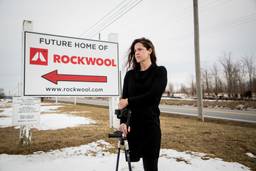The Miners Who Fought for Workplace Safety Have a Thing or Two to Teach OSHA Right Now
Austyn Gaffney

In October 1993, Charles Patrick Hayes, or Pat, was working at a grain bin in Defuniak Springs, a small town in southern Alabama near Fairhope, where Pat was raised. Pat was knocking down corn from the walls of the silo when the crop caved off the sides and crushed him. Pat, just 19, suffocated to death. It took five hours to retrieve his body.
Pat’s father, Ron Hayes, quickly turned his grief into advocacy. A few months after Pat’s death, Hayes quit his job as an X-ray technician and manager of a clinical outpatient facility, and he founded a non-profit called the FIGHT Project, or Families In Grief Hold Together. For almost 30 years, Hayes traveled from Fairhope to Washington, D.C. (45 times by his count) pressuring legislators to improve federal worker safety regulations under the act, implemented in 1971, that created the Occupational Safety and Health Administration, or OSHA. According to Hayes, stricter enforcement of worker safety protocols may have saved his son’s life.
Although OSHA, which monitors most major employment sectors, including the agricultural, construction and service industries, has been criticized for lax regulations for almost 50 years, Covid-19 has brought worker safety back into the forefront of national news and rekindled the conversation around reform. If such reform is to happen, advocates say regulators can look for guidance from a conglomerate OSHA doesn’t monitor: the mining industry.
According to Tony Oppegard, an attorney who specializes in miner safety, the Mine Act is so much stronger than OSHA that “there’s no comparison.” Enacted in 1969, the inherent dangers in mining meant stricter regulations were implemented from the get go.
The Mine Act made mining much safer, and fatalities continue to decrease, with 24 on-the-job fatalities in 2019. While the decrease might be related to a loss of jobs — the coal industry has flatlined in recent years — experts say it’s also related to regulations in the Mine Act: For example, underground mines have to be inspected, at minimum, four times a year.
Meanwhile, OSHA guidelines have no requirement for the minimum number of inspections. That means a lot of businesses can essentially go unregulated. Along with a lack of inspections, there’s a lack of inspectors. While mines have about one inspector for every 50 miners, OSHA has just one inspector for every 79,000 workers. According to data compiled by the AFL-CIO, over 3.5 million injuries were reported to OSHA in 2017. In 2018, an average of 275 laborers died each day from workplace-related illnesses or injuries.
One of the biggest differences in these fatality numbers may also be a workplace right unique to the Mine Act: the broad right to refuse unsafe work.
Take Charles Howard. Howard worked in a number of underground coal mines around his home of Letcher County, Ky. since he was 18 years old. While Howard knew mining was dangerous work, as he grew older, he observed his supervisors making unsafe decisions to get the coal out cheaper and quicker, increasing the likelihood of injuries, illnesses and fatalities. Howard himself suffered multiple injuries while underground including a torn rotator cuff, a broken back, a traumatic brain injury and black lung — a fatal respiratory disease unique to coal miners.
So, between 1989 and when Howard retired in 2014, he fought hard for miner protections on the job site. This was easier under the Mine Act than OSHA because of a section called 105© which allows workers to refuse work they consider unsafe without getting fired — and quick temporary reinstatement pending a full investigation and hearing. Under 105©, when one of Howard’s former employers, the Cumberland River Coal Company, tried to unlawfully fire him twice, Howard filed federal complaints with the help of Oppegard. After he filed, a federal review commission permanently reinstated Howard in his old job.
Under OSHA, this right isn’t nearly as strong. In order to refuse work, an employee has to prove they faced imminent danger of serious injury or death. That’s difficult to do in jobs that contain regular hazards. For example, in farming, workers could face silo explosions or extreme summer heat. In construction, laborers could fall off roofs or scaffolding. But it’s notoriously difficult to place the onus of these accidents on the employer.
But the Mine Act isn’t perfect, and OSHA can also learn from its failures. For example, under the act, safety violations can only lead to misdemeanor charges, not criminal convictions. So mining violations often mean little to no jail time for operators. When the Upper Big Branch Mine disaster, caused by a dust explosion, killed 29 West Virginia miners a decade ago, Don Blakenship, CEO of Massey Energy, spent just one year in prison.
According to Oppegard, a solution could be implementing an industrial manslaughter law under the Mine Act and OSHA, like one passed in Queensland, Australia. Now, if there’s criminal negligence in a mining death, Australian operators could receive 20 years in prison.
Howard, now 60 and retired, agrees that company management might feel more incentivized to protect workers if supervisors are personally responsible for injuries and illnesses on the job site. But, according to Howard, another problem is a lack of education around miner’s rights.
“They didn’t want me on the job because I stood up for my rights,” said Howard, who believes he was let go from multiple jobs because of his advocacy. “Other miners started saying, well we ain’t going to let them [the mining company] do that either.”
For Hayes, like Howard, one of the biggest problems with OSHA is not its scaffolding, but how the act has been implemented.
“I’ve always said OSHA is fair to business and workers both, but it’s been so mismanaged over the years,” Hayes said over the phone. “We’ve got to have a leader who knows what they’re doing.”
According to the AFL-CIO, under President Trump, a pro-business agenda means worker safety has been significantly deregulated since 2016, with budgets slashed and the number of OSHA inspectors at its lowest level in half a century.
Hayes, who recently suffered a series of strokes which he attributes to stress over reforming OSHA, is frustrated by the slow pace of change, but he’s not giving up. He has one wish for the legacy of his work: “I want to be remembered as the man who gave OSHA a heart.”
Austyn Gaffney is a freelance reporter in Kentucky covering agriculture, energy and climate change. Her work has been featured in the Guardian, National Geographic, the New York Times, Rolling Stone and more.






